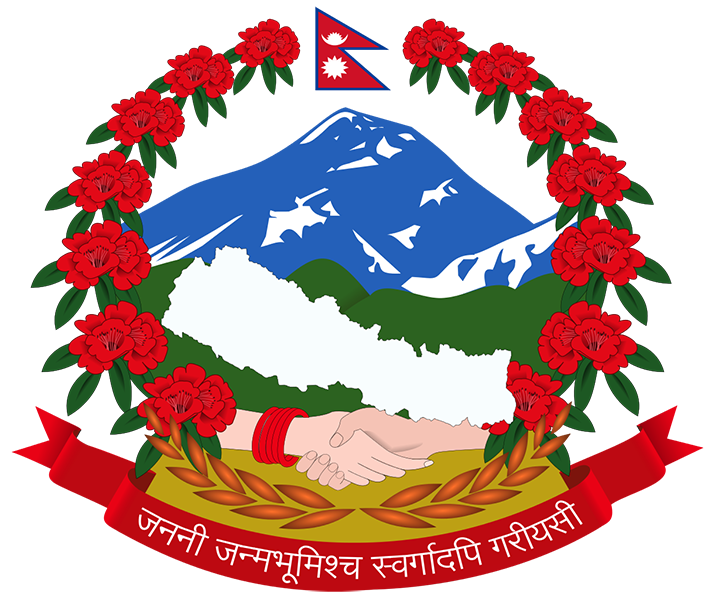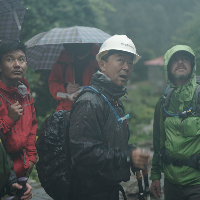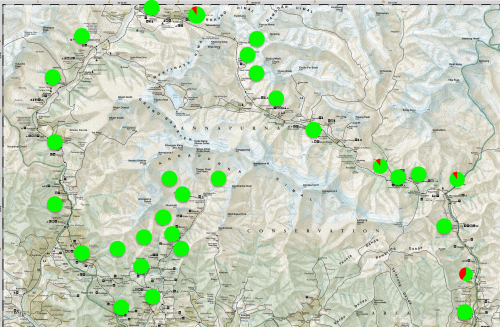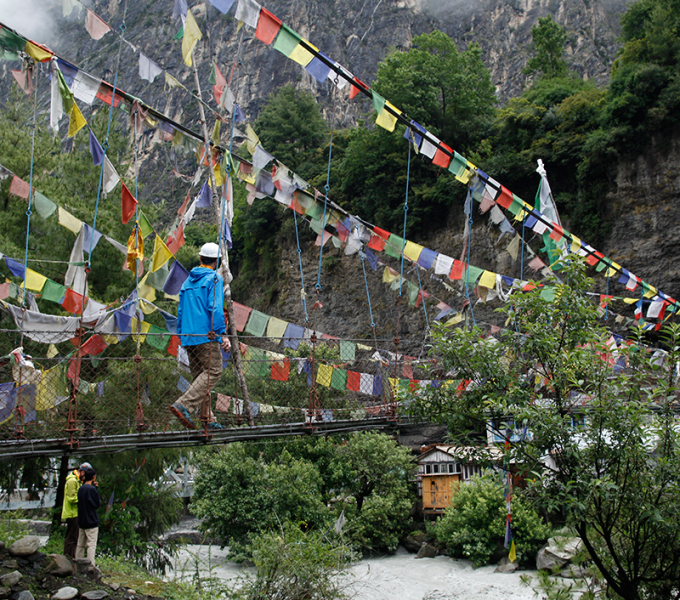FOR IMMEDIATE RELEASE
NEXT STEPS FOR NEPAL’S RECOVERY AS EXPERTS GREENLIGHT KEY TOURIST TREKS
- Earthquake engineers release first official assessment of one of Nepal’s most popular treks
- Government and tourism industry leaders welcome news of ‘very little damage’ to Annapurna region before season begins in September
 NEPAL – One of the most popular trekking areas of Nepal has been given the green light by experts three months after powerful earthquakes rocked the country. The first official report on earthquake-related damage in the Annapurna region has been welcomed by the Government of Nepal, trekking companies, and development agencies behind the assessment, who regard it as an important step towards the country’s economic recovery.
NEPAL – One of the most popular trekking areas of Nepal has been given the green light by experts three months after powerful earthquakes rocked the country. The first official report on earthquake-related damage in the Annapurna region has been welcomed by the Government of Nepal, trekking companies, and development agencies behind the assessment, who regard it as an important step towards the country’s economic recovery.
Tourism is Nepal’s largest source of foreign income, with more than 40 percent of the country’s 800,000 visitors each year coming for its iconic trekking and adventure activities. However, tour operators looking for reassurance on safety for travelers in the Annapurna region have had to rely on anecdotal evidence to date.
“There has been a decline in foreign tourists since the earthquake,” said Suresh Man Shrestha, the Ministry of Culture, Tourism and Civil Aviation’s Secretary, “Tourism is very important for Nepal’s economy and for the Nepalese people. But, we needed to assess which areas of the trekking regions have to be reconstructed for the safety of our visitors.”
In a joint public-private initiative, earthquake engineering specialists received funding from SAMARTH-UKAID on behalf of the government of Nepal to conduct the expert assessment. The report confirms that the Annapurna region, located in the Himalayas in north-central Nepal, sustained “very little damage, with the 3 percent of buildings which were damaged in the earthquake all easily repairable.”
The assessment of the Annapurna region was conducted by a team of earthquake geotechnical experts, structural engineering experts, conservation officers from the Annapurna Conservation Area Project (ACAP), and a leading trekking operator with its local mountain guides who provided their extensive knowledge of the region and insight into historical hazards. The team conducted a technical inspection of the main trekking routes and selected villages ahead of the monsoon season.
 “The aim of the report was to develop an overall understanding of the extent of the damage from the earthquakes so that we could assess the safety of the region’s trekking routes,” said Dr. Kit Miyamoto, the technical team leader and a structural earthquake engineer, “Conservation officers from Annapurna Conservation Area Project and trekking guides from the region were critical in helping the technical team navigate the almost 200 kilometers of trekking routes that were surveyed for earthquake-related damage.”
“The aim of the report was to develop an overall understanding of the extent of the damage from the earthquakes so that we could assess the safety of the region’s trekking routes,” said Dr. Kit Miyamoto, the technical team leader and a structural earthquake engineer, “Conservation officers from Annapurna Conservation Area Project and trekking guides from the region were critical in helping the technical team navigate the almost 200 kilometers of trekking routes that were surveyed for earthquake-related damage.”
“Like many other tour operators we’ve seen a significant slump in bookings since the quake as travelers are concerned about safety in Nepal. There’s been speculation about the condition of the treks, but we believe that the industry needed a proper assessment to make decisions based on facts,” said Darrell Wade, CEO and founder of a global tourism company who operates in Nepal.
The company is donating all profits from the upcoming season in Nepal back to support charities in Nepal as part of the initiative to return tourism to the country. “We’re one of the largest trekking operators in Nepal, and we know how reliant the country is on tourism so we felt a big responsibility to get things in Nepal back to normal as soon as possible by kick-starting the trekking season in September,” Wade said.
The assessment is believed to be the first ever completed by international earthquake engineering specialists on trekking routes in Nepal, and the recommendations include opportunities to manage potential hazards not associated with the April and May earthquakes.
During the assessment, more than 40 hours of film footage of the area surveyed was captured which the geotechnical team studied in the weeks following the field work in order to provide action-oriented recommendations to address potential geologic hazards on the trekking routes to provide greater safety to visitors.
“Samarth-Nepal Market Development Programme will start implementation of the recommendations of this assessment in close cooperation with ACAP, the Ministry of Culture, Tourism and Civil Aviation of Nepal and private sector partners” says Wouter Schalken, Tourism Programme Manager of Samarth-NMDP.
“Annapurna is ready to open for business” Miyamoto said. “The report highlights areas where organizations can help Nepal rebuild stronger than ever. We now have the information needed to take action. ”
SUMMARY OF THE ASSESSMENT
Annapurna region:
- Around 30 bridges were assessed, with no damage found.
- 250 buildings were assessed in the Annapurna region – with earthquake damage in only 6 buildings, all can be repaired easily.
- Overall the report concluded that the Annapurna Circuit and Annapurna Sanctuary trails and villages appear largely undamaged by landslides following the earthquakes.
- However, the engineering assessment identified a number of potential hazard areas on the trek that can now be remedied as a result of the report.
- Experts from Miyamoto have recommended a more in-depth follow up assessment to be completed after the monsoon season ends.

The assessment also identified longer-term opportunities to reduce risks on the trails, including improved signage and communications for locals and visitors with information on natural hazards; providing engineering support for accommodation owners and construction workers to build back better and greatly improve accommodation structures on the trail.
Engineers also identified existing rockfall hazards that would not have been identified without the assessment, enabling locals and trekking companies to reduce occupancy in potential hazard areas by adjusting itineraries and relocating houses and lodges to safer areas.
NOTES TO EDITORS:
For more information please contact Gillian Monahan, Global PR Manager, Intrepid Travel on Gillian.Monahan@Intrepidtravel.com, or tel +61 410 277 127 (based in Australia)
Or Diana Erwin, Communications Director, Miyamoto International, email: derwin@miyamotointernational.com, or tel: (916) 524-2969 (based in California)
Images of the Annapurna region and the safety assessment are available to download, please credit Intrepid Travel: https://intrepidgroup.filecamp.com/public/collection/442m-u2cns390
About Samarth
Funded by the UK’s Department for International Development, Samarth – NMDP is a five year market development programme that aims to reduce poverty in Nepal by increasing incomes of 300,000 smallholder farmers and tourism entrepreneurs. The programme works to improving the underlying pro-poor performance of rural sectors, leading to opportunities for better access and improved growth for poor and disadvantaged people. For more information, visit www.samarth-nepal.com and www.greathimalayatrails.com
About Intrepid Travel
Intrepid Travel’s award-winning leaders take more 250,000 travellers to more than 100 countries each year to experience local culture, try local food, take local transport and stay in local accommodation. One of the largest trekking operators in Nepal, Intrepid Travel has more than 200 staff based in Kathmandu taking thousands of travellers to explore Nepal’s iconic mountains each year. Intrepid Travel is donating all profits from the upcoming season in Nepal back to local and international charities working to rebuild the country. The appeal aims to raise AUD $1million for Nepal through Intrepid’s the not-for-profit, The Intrepid Foundation. For more information visit www.intrepidtravel.com/return-nepal and www.theintrepidfoundation.org
About Miyamoto International
Miyamoto International is a global earthquake structural engineering and project management company providing critical services that sustain industries and safeguard communities around the world. Built on decades of earthquake and structural engineering experience in the field, Miyamoto’s expertise helps to address the economic, political, socio-cultural, sustainability and technical challenges involved in risk reduction and post-disaster recovery. For more information, visit www.miyamotointernational.com

